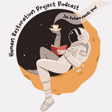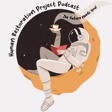
75: Refuse to Teach: Anxiety, Organizing, and well, Death
Let’s put this into perspective: the United States is planning on the mass reopening of schools when COVID-19 has still not ended its first wave. Millions of people have been diagnosed, and the CDC has issued little concrete guidance on how schools will actually reopen next month. The US Secretary of Education, Betsy DeVos, has essentially ignored questioning of even the notion of remote learning and does not believe that this is a serious issue that will effect children (flat out refusing to acknowledge the adults in the room too.)
This podcast addresses the anxiety and real chance of death due to COVID-19 in the classroom. It calls upon teachers to organize and demand remote learning. Let’s face it, there’s two options:
1) We go back to school, cases increase, and more students, teachers, and faculty members die. This isn’t a hypothesis. There are ample facts presented in this podcast on why this is the case.
2) Teachers stand up to districts, using their extreme leverage during the pandemic, to stay remote and minimize destruction.
I encourage you to listen in. - Chris
Show Notes
- Parent Letter Template - We Demand Safe Schools!
- “There Will Be No Teachers Left”
- School Virtual/Hybrid Reopening Demand Template Letter (Florida)
Citations
- https://www.youtube.com/watch?v=6b8Kg_a4Omo
- https://www.cdc.gov/covid-data-tracker/#cases
- https://coronavirus.jhu.edu/map.html
- https://www.nytimes.com/interactive/2020/us/coronavirus-us-cases.html
- https://www.nytimes.com/2020/03/22/health/coronavirus-restrictions-us.html
- https://www.advisory.com/daily-briefing/2020/05/26/children-transmission
- https://www.businessinsider.com/how-coronavirus-travel-through-air-droplets-aerosols-2020-3
- https://www.cnn.com/2020/07/12/us/arizona-teachers-coronavirus/index.html
- https://www.cnn.com/2020/07/11/politics/cdc-documents-warn-high-risk-schools-reopening/index.html
- https://www.npr.org/sections/coronavirus-live-updates/2020/07/10/889848834/nations-pediatricians-walk-back-support-for-in-person-school
- https://www.wral.com/coronavirus/concerns-mount-in-chapel-hill-over-prospect-of-students-returning-to-unc-amid-pandemic/19183462/
- https://www.bloomberg.com/news/articles/2020-07-13/covid-19-reinvades-u-s-states-that-already-beat-it-back-once?srnd=premium
- https://www.nbcnews.com/news/world/israel-battles-new-wave-coronavirus-infections-after-reopening-n1233139
- https://www.cnn.com/2020/05/29/asia/south-korea-coronavirus-shuts-down-again-intl/index.html
- https://www.scmp.com/news/hong-kong/health-environment/article/3092174/coronavirus-third-wave-fears-escalate-hong-kong
- https://www.reuters.com/article/us-health-coronavirus-hongkong/hong-kong-tightens-social-distancing-again-as-coronavirus-cases-rise-idUSKCN24E1L5
- https://www.npr.org/sections/goatsandsoda/2020/07/10/889376184/photos-how-hong-kong-reopened-schools-and-why-it-closed-them-again
- https://www.youtube.com/watch?v=5JSGOO6GiI8
- https://www.edweek.org/ew/section/multimedia/map-coronavirus-and-school-closures.html
- https://www.cnn.com/2020/07/13/us/teachers-covid-19-return-school/index.html
- https://fortune.com/2020/05/28/us-unemployment-rate-numbers-claims-this-week-total-job-losses-may-28-2020-benefits-claims-job-losses/





